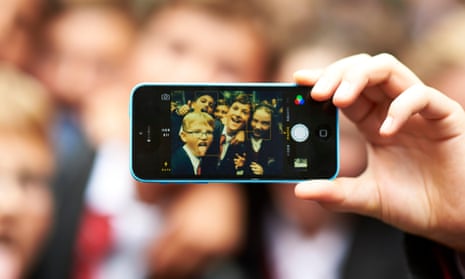Devices from iPads to smartphones are ever more pervasive in all our lives, but many look at this prospect with concern – worried about the effects of digital distraction.
Parents and teachers are certainly aware of the extent to which our children use modern technologies, and a recent study has underlined the impact they could be having in school. The London School of Economics showed that test scores of 16-year-old students were 6.4% higher after schools banned students from using mobile phones.
The effect of banning mobiles was the equivalent of an extra week’s schooling over the academic year, according to the research. It also found that the ban had a greater positive impact on students with special education needs and those eligible for free school meals.
I grew up in the golden age of active youthful creativity. Lego bricks were as common in our homes as televisions, and action figures gave us a blank canvas upon which we would create our own stories. We were engaged and we learned by leaning forward and getting our hands dirty.
Even in the early days of the digital era, children learned by doing – for example, using Logo programming language to guide a “turtle” around the classroom. At home, many used software like Shoot-’Em-Up Construction Kit to make their own game worlds. Today, Minecraft (a video game that generates different terrains for players to explore) has become the ultimate fusion of all of these possibilities – an unstructured environment for children to discover their own potential.
The problem with banning mobiles in schools is that it runs the risk of not giving young people the space to get stuck into technology. We want our kids to code and become digital creators, not to just be passive consumers.
The current trend for people to watch YouTube videos of others building Minecraft environments is one example. Watching is the first step to learning a new skill, but it’s an essentially passive activity. No one ever became a craftsman, an inventor or a creator simply through observing others. The old adage rings true: practice makes perfect. Children need an easy and accessible way to move from consumer to creator, and this already exists in their pocket.
Outlawing mobile phones is a shortsighted measure that doesn’t account for all the innovative things that teachers can, and regularly do, devise to give children the skills they need to thrive in the modern world. Building mobiles into the school curriculum enables pupils to learn everything from soft skills, such as learning to use the web effectively, to more specific tools, such as the latest communications and social platforms that are used in the world of work. And that is to say nothing about teaching specific skills, such as coding, which pupils can learn on their own devices, and where they can play with the results of their own work.
From a practical point of view, how can we tell children that technology is such an important part of the curriculum when we simultaneously say they can’t be trusted with their own devices because it inhibits their learning? Creativity and consumption must go hand in hand.
Of course, smartphones can be a distraction – but the answer should not be to ban them; we are already too far gone for that to appease screen-hungry students. The answer is a clear classroom policy for when it’s acceptable to use phones, with mobile screen time separated from other activities in the lesson plan. This would ensure devices are returned to pupils’ pockets when they are not needed for a specific task.
It is about encouraging active, creative use of digital devices in the classroom. For example, students could be given assignments which require them to question experts using Google+. The ability to condense a week of research material into a 140-character tweet is also a valuable skill for them to learn.
Where many schools don’t have the budget to replace ICT equipment as soon as it reaches the market, plenty of children have powerful computers in their pockets – their phones. Using children’s mobiles to complete a quick online task, like research, will be much faster than logging onto school computers. It also allows a greater proportion of lesson time to be focused on learning.
When backed up by proper policies, the positives of using digital devices at work include better engagement and productivity. Businesses have been dealing with the bring-your-own-device trend for some time, and many enterprises have discovered that embracing personal devices at work is far more beneficial than banning them.
Daniel O’Sullivan is a former teacher and chief operating officer at Code Kingdoms, a game for children aged six to 13 that teaches coding and computational thinking.

Comments (…)
Sign in or create your Guardian account to join the discussion